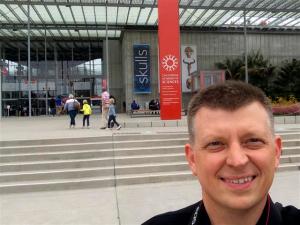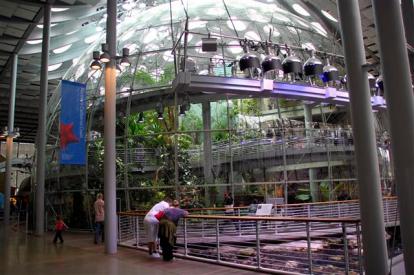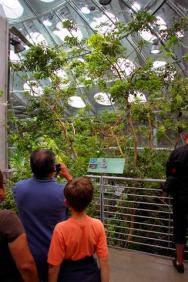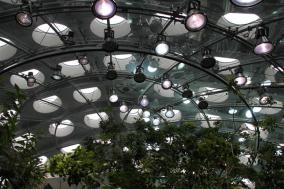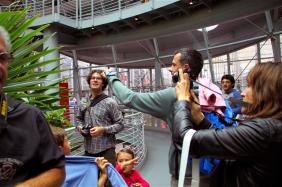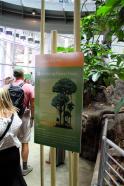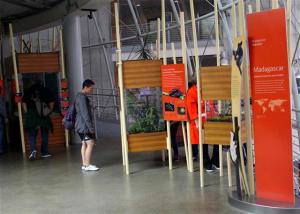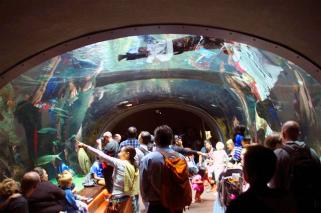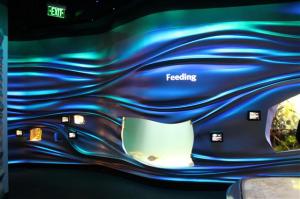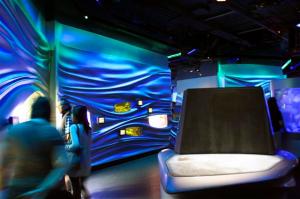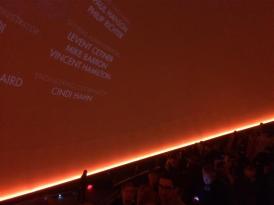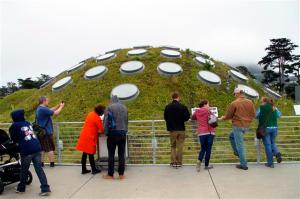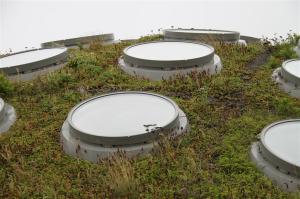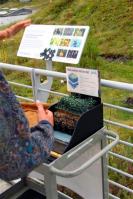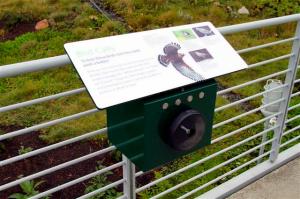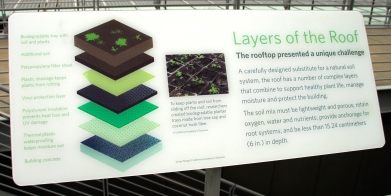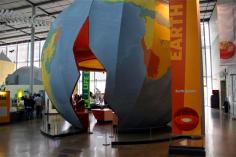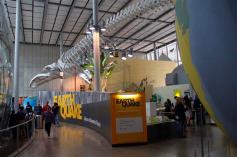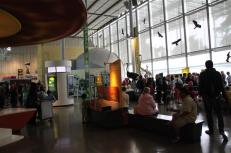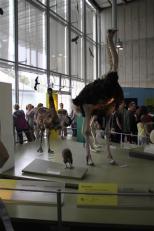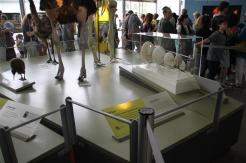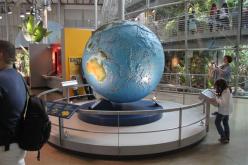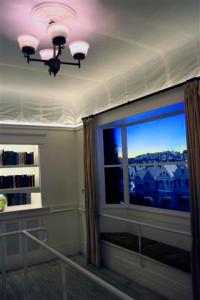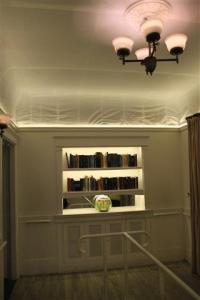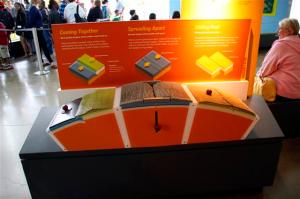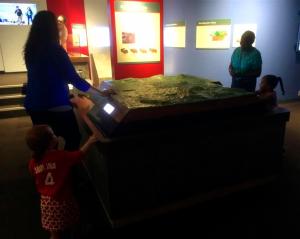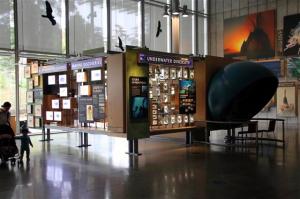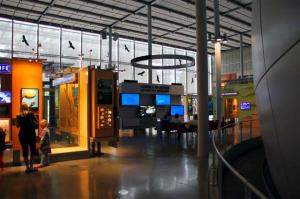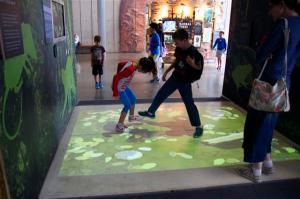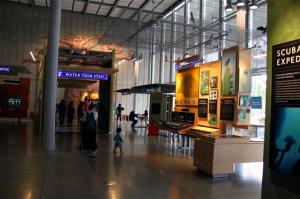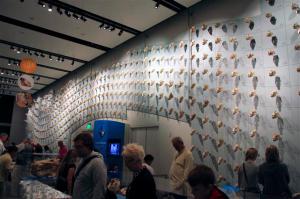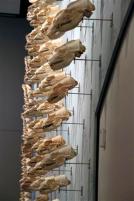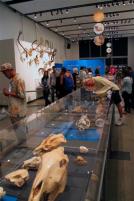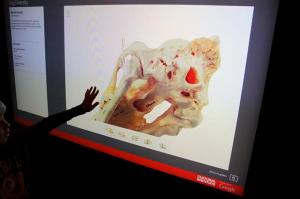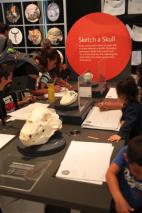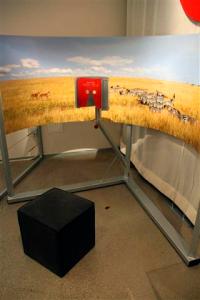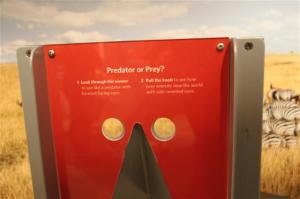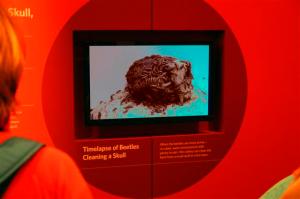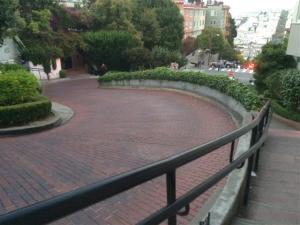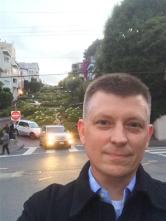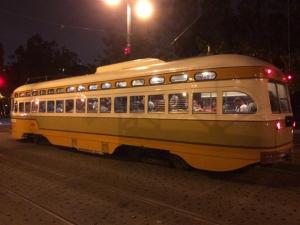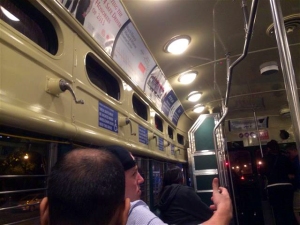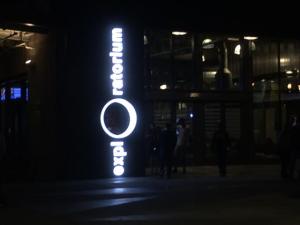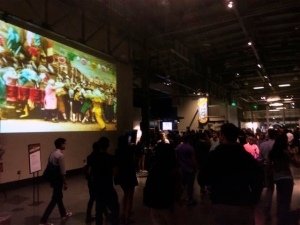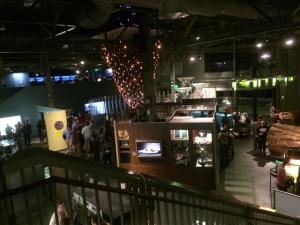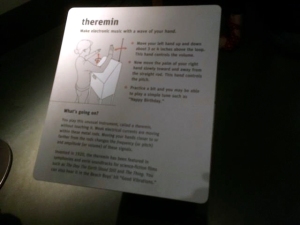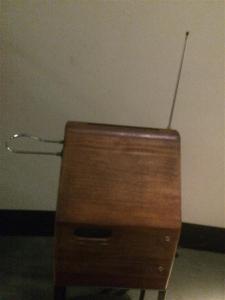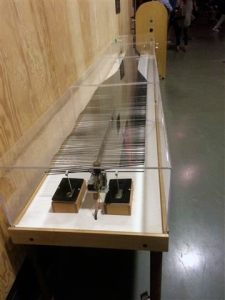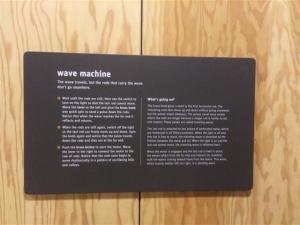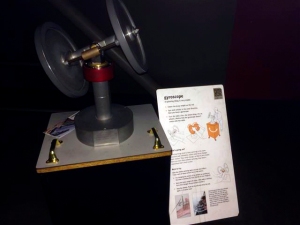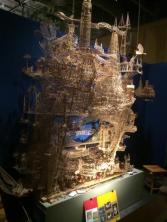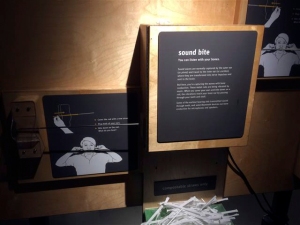Destination: San Francisco – An Exhibit Designer’s Journey, Part 1 of 3
– By Tony Schmidt, exhibit designer
In the book, Something Incredibly Wonderful Happens: Frank Oppenheimer and the World He Made, it describes how innovator/genius Frank Oppenheimer, founder of the Exploratorium, built a “’museum of human awareness that combined art and science while it encouraged play, experimentation, and a sense of joy and wonder…” After years of following its message, on August 7th, 2014, thanks to PGAV GO, I reached the Exploratorium. It definitely lived up to the description for me.
PGAV GO was offered this year to all PGAV staff with the intent to enable self-initiated professional growth (GO meaning ‘Growth Opportunity’). PGAV GO had already supported my professional memberships to both IDSA and SEGD. With the remainder of my PGAV GO allowance, I proposed to our PGAV GO advisors VPs Al Cross and John Kemper to travel to San Francisco with a packed museum-visit agenda. Well, the trip happened and let me tell ya, as an exhibit designer here at PGAV Destinations, this trip was spectacular!
I thought it might be an interesting challenge to present components from each destination visited over the three-day tour cycle, but passed through the lens of the Exploratorium description above: a “’museum of human awareness that combined art and science while it encouraged play, experimentation, and a sense of joy and wonder…” In my mind I interpret this as:
- Create a destination that’s stimulating
- Let it be visually stunning while delivering meaningful content
- Foster an atmosphere for playful discovery where guests naturally let go of judgments and consequently throw themselves into the exhibits and explore.
As an overview, each day of the following schedule will have its own blog entry:
Day 1 (blog 1)
Day 2 (blog 2)
- Golden Gate Bridge
- The Walt Disney Family Museum (special exhibition: Mary Blair, Imagineer)
- Snibbe Interactive (studio visit)
- Audium (theater experience)
Day 3 (blog 3)
- Exploratorium (regular hours)
- Alcatraz Island (scenic boat cruise)
- Aquarium of the Bay
- Musée Mécanique
- The San Francisco Dungeon
The California Academy of Sciences
To begin Day 1, my trip started with the The California Academy of Sciences (CAS) (tag line: “Let the Wonder Begin”), found nestled within Golden Gate Park, which by itself offers a vast array of gardens and other spectacular destinations. Upon entering the CAS, you are immediately drawn to massive 90-foot diameter, four-story, glass bio-dome featuring Rainforests of the World.
The experience begins at ground level and spirals around the perimeter on a path leading you to the top ‘emergent layer.’ Each level also represents a different rainforest from around the world: Borneo, Madagascar, Costa Rica, and the Amazon. The levels are each unique with distinct rainforest habitats. Free-standing exhibits are placed along the way following the scenic scheme of the environment. Once you reach the top, you take an elevator and descend to a subterranean Amazonian flooded forest and discover a world of fishes to then proceed through the aquarium with a stunning scenic environment of contoured water themed wall panels framing well-populated aquarium tanks.
Exploratorium filter for Rainforests of the World:
- Did the exhibit heighten awareness? For me, absolutely. The immersive experience offered an indulgent amount of sensory opportunities to enjoy: the sound of water, the humidity in the air, gorgeous birds, butterflies, plants, snakes and other creatures to experience in context within a shared space of conditions similar to their native home.
- Did the experience combine art and science? Gorgeous! Technologically the architecture/engineering of the dome is brilliant. Every exhibit item fit within a unified rain forest theme, well-crafted while enabling easy visibility for each species on display.
- Did it encourage play, experimentation, and a sense of joy and wonder? I watched some butterflies perch on a father’s shoulder. He and his kids were elated. Several of the exhibit displays featured creatures that were quite exotic and fascinating to see. Sense of wonder was easy here. There was play in the joy people felt just in being within this space. I don’t recall any interactives here though, so perhaps experimentation wasn’t much of an outlet. Personal engagement with more species could be a solution to achieve experimentation and play. Beyond the Amazonian flooded forest area within the aquarium, there were some interactives there, but none that I found truly engaging.
For the sake of brevity, I need to limit what I can feature from the CAS. The place is incredible and expansive: a world class destination. Aside from the bio-dome, the planetarium is described as the largest in the world with a “75-foot diameter projection screen tilted at a 30 degree angle.” I saw Dark Universe and it’s awesome.
The 197,000-square-foot Living Roof, designed by Renzo Piano with seven undulating green hillocks, by itself is incredibly cool and complex: visually and experientially awesome!
From up there, you gain exposure to “the densest concentration of native wildflowers in San Francisco.” I met a docent who explained the technology of the layered roof system composed of “50,000 porous, biodegradable trays made from tree sap and coconut husks as containers for the vegetation.” The trays are in place to keep the vegetation from sliding down from the seven slopes. In general, to be up there is a wonderful experience. The view is stunning. There are several information panels to explain the science behind the technology of the roof and its benefits. I particularly enjoyed a simple interactive which was driven by a hand-crank generator producing a variety of bird calls.
My experience of the Living Roof was that it hit on all the Exploratorium criteria. An absolute joy!
The Earthquake exhibit however, wasn’t without its shortcomings.
Perhaps the 1906 and 1989 earthquakes that devastated San Francisco serve as an immediate connection to deliver the primary messages for this exhibit regarding plate tectonics and geologic studies paired with the migrations of species with particular emphasis on Gondwana? It felt disjointed.
The Shake House consumes a significant gallery footprint behind a towering scenic flat of a classic Victorian home. A pre-show begins the experience within a small dome screen (which I found quite enjoyable actually), but then clumsily leads guests into the featured, immersive Shake House. Audible rumblings of this experience are heard throughout the gallery. To my surprise, the interior of the Shake House is quite small, representing a dining room of this Victorian era home.
A docent prepares you for the experience and advises as you stand in rows of two to hold on to a rail because you will experience what it feels like to be in one of the two major SF earthquakes. He leaves, and the structure begins to rattle about. Some items predictably shift in place. There is a view out of a small window of San Francisco’s famed “Painted Ladies” houses of Alamo Square. For as much visual weight as that window view carries, there is actually little to look at. Why wasn’t an animation developed to illustrate how SF was nearly obliterated by these quakes? Why is it so important that I feel the tremors in this way? I commend the effort, but there was much left on the table for me as a takeaway.
The interactives outside of the Shake House were also a bit underwhelming. Plate tectonics is a very cool topic, yet there were few impactful interactives to communicate this understanding. Such an example was a small interactive illustrating three types of quake movements, which could have been larger and more physical.
There is a nice example of an interactive on this topic at the St. Louis Science Center with large slabs resting on a table that take physical work to move. There is a scraping sound as you shift the plates back and forth. This is an aged exhibit example, but the activity is still fun to do and memorable.
Earthquakes are physical, so why not give us a more physical exhibit experience beyond just shaking us in a small faux dining room?
Exploratorium filters for the Earthquake exhibit:
- Heighten awareness? – hey you shook me!
- Art & science? – the science was there, but the art left a bit to be desired.
- Play, experimentation, & a sense of joy & wonder? – sorry, not enough for me here.
Islands of Evolution is another area ready for an upgrade.
It’s visually quite nice, but the interactives are at times dated and ineffective, with an apparent inability to attract a constant flow of guests. One particular floor interactive derived from overhead projection invites guests to “see which bugs take your bait.” The idea is to use your feet to position food sources to attract bugs. What do kids actually do? #1 They didn’t appear to care about feeding the critters. #2 What they really did seem to enjoy was stomping on bugs, apparently missing the point. Once stomping bugs got boring, they moved on. Other digital interactives within this gallery also left a bit to be desired.
Exploratorium filters for Islands of Evolution:
- Heighten awareness? – not really. The experience left me feeling flat.
- Art & science? – attractive exhibits with interesting content if you are willing to invest your time.
- Play, experimentation, & a sense of joy & wonder? – I’m afraid the delivery was a bit dull based on today’s standards.
The Skulls temporary exhibit was a delightful treat. When you enter the gallery, a mind-blowing wall of 400 hundred California sea lion skulls look down on you (and the vast array of skulls spread out throughout the gallery) from a gallery-wide panoramic wall.
This is a very cool exhibit. “Every skull tells a story.” The range in species showcased simply via their skulls is quite compelling. Predators vs. prey, mammals and reptiles…they are all there. The interactives were fun.
I enjoyed a challenging interactive featuring predator versus prey vision comparisons that I found effective (compared to others I have seen elsewhere).
But the most compelling displays had to be those of live, flesh-eating dermestid beetle larvae devouring multiple skull carcasses displayed over various stages of flesh removal – actively “transforming skulls into specimens.” Creepy yes, but dauntingly captivating and a highly effective skull cleaning process for the museum!
Exploratorium filters for the Skulls exhibit:
- Heighten awareness? – yep, you had me!
- Art & science? – beautiful displays with great content.
- Play, experimentation, & a sense of joy & wonder? – You bet.
Honestly, I didn’t think the exhibit was going to be that captivating for me, but I was pleasantly surprised. The skulls took on a beauty all of their own. Perhaps seeing each of the species side-by side is what made them so captivating for me as a guest. I recall my shocking discovery to see the skull of a toucan that appeared so tiny in proportion to its massive beak: just not much to it. There were several other interactives there that were fun, challenging and visually rich: a marvelous exhibit!
In Route to the Exploratorium
Dusk was an indicator that it was time to make my way for the Exploratorium. I was staying in the North West Marina District near the Presidio. The Exploratorium is across SF on the North Eastern shore at Pier 15. On this first day in SF, what better way to get there than to walk. And so I did. There are a lot of hills in SF. Really big ones! Top of my list was to explore the infamous, brick paved hairpin section of Lombard Street descending through Russian Hill. Walking alongside its eight switchbacks is nothing short of magical.
It feels like stepping into a postcard. Enthusiasm abounds up and down the hill as tourists both on foot and by vehicle journey across “the crookedest street in the world.” Perhaps not a museum; but as destination designers, this iconic masterpiece must be given consideration. It certainly invites play, wonder and joy while portraying art and science.
Eventually I found my way to the Fisherman’s Wharf and jumped onto a historic 1940’s street car which serves as part of the Market Street Railway system: Museums in Motion. The streetcars are visually spectacular and an absolute pleasure to ride. As a passenger, I was savoring every detail from the hand crank windows, to the streamlined features enveloping oval-shaped windows along the interior ceiling line. Of course the color scheme of the fleet is delightfully vintage. Play, wonder and joy while portraying art and science. Yep!
The Exploratorium – After Dark
Finally, Pier 15: the Exploratorium. At night its internally illuminated white light of the main I.D. sign seems as a glowing beacon blasting against the black of the evening sky inviting discovery within (or maybe I was just excited?).
Once inside I found the place a buzz of adults zooming about like children. A DJ was blasting tunes through the corridors. I thought I would see more people carrying beer and wine, but I saw little. Instead, what I saw were ‘grown ups’ jumping from exhibit to exhibit as if someone took off the shackles of adulthood with full freedom to play, discover, interact, and saturate themselves with challenging, science-based learning.
Through its own filter:
- Heighten awareness? – yeah man. People were having a blast. I certainly was.
- Art & science? – everywhere.
- Play, experimentation, & a sense of joy & wonder? – I heard a guy say something like, “Man, we are totally geeking out on science!” It was really fun to be there.
The Exploratorium claims that 80% of the world’s science centers use Exploratorium-developed exhibits. From my exposure to science centers around the country it was clear that I had arrived at the mothership. This was the place for interactives. Hey, I got to play with a Theremin!
I also played with a mechanical wave machine. Very cool!
They had a gyroscope on a wheeled cart that moved while you turned it and elsewhere a sculpture made of matchsticks which formed icons paying tribute to San Francisco. No shortage of variety at the Exploratorium!
By far, my favorite exhibit was called ‘Sound Bite.’ When you approached the exhibit you were invited to take a straw and remove its paper. Then you were instructed to slide the straw over a metal rod, bite down on the straw, and then cover your ears with your hands. As soon as you did this, hip hop music filled your ears: bone transmission! This was such a fun surprise and it worked beautifully. I guess I can shed my Dr. Dre’s Beats!
There were many, many exhibits here that were a ton of fun to interact with. But it was also fun to be surrounded by so many people seemingly savoring it all as much as I was. The atmosphere was exciting and inspiring.
I revisited the Exploratorium on my 3rd day so check out my 3rd blog in this series for more on the Exploratorium!
All in all, a pretty amazing day one!!!


